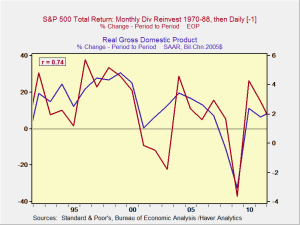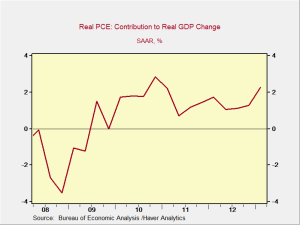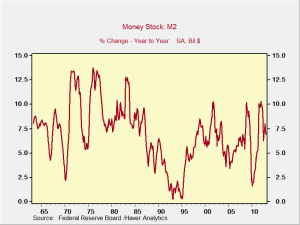A point I have been making about the stock market recently is that it makes no sense to bet against it in the short run. The momentum is clearly on the upside, and there are no apparent reasons why that trend can’t continue. We may very well see new records for a while.
I do not, however, expect the trend to go on forever. At some point, the market will top and decline. We are already well into very unusual territory for how long an increase can last without a downturn. At some point, a decline is certain, and the longer it takes, the more certain it becomes.
Two completely non-market-related stories today made me think about trends and changes. The first is about how an aquifer in the American Midwest has started to run dry. Farmers, who for generations had drawn water from it, now have to change crops because the water just isn’t there anymore. This is a trend that has run its course and is not coming back. It will take decades or centuries for the aquifer to recharge, even if left completely alone. Reading the story, the farmers have known what was coming, but they seemingly didn’t make any adjustments until they actually ran out. As a result, some of them are in financial trouble.
The other story is a comparison of the apparent patience of the peripheral European countries with their self-inflicted depressions in the name of preserving the euro. The article compares the situation in Italy and Spain with that in Argentina, where similar economic sacrifices were made to preserve a link between that country’s currency and the U.S. dollar. The commitment was total—right up until Argentina’s economy had shrunk by about 8 percent and subsequently collapsed in short order. It was only then that the country abandoned the dollar link.
The economies of the peripheral eurozone have shrunk about 8 percent right now, suggesting that perhaps the euro is not as certain as it has been assumed to be. The euro has not collapsed, but what happened in Argentina certainly suggests that it is a possibility.
The point here is that trends continue from their own momentum, often beyond what anyone would have thought possible, and then collapse. The housing market is the most recent such example here in the U.S.
Right now, we have many trends moving in the right direction—the deficit and the housing market recovery are two examples. Both are moving the right way for fundamental reasons, and they are not that far along. Moreover, they are still in what can be considered “normal” territory. The gradual recovery of the U.S. economy seems to be just such a trend.
But the primary trend supporting the increase in the stock market is increasing corporate profit margins. This trend has been going on a long time, and it is already at record levels. Even if margins remain at current levels, the idea that they will continue to expand demands that costs, especially employment costs, continue to decline. This is a trend that needs to be watched closely.
There may still be some juice to this. Who knows? But, as the trend gets older and older, and more and more into record territory, the possibility of stabilization or a reversal gets more and more likely. With current market valuations pricing in a great deal of good news, the consequences of that could be bad. Just as with margins, the upward trend of the stock market bears close watching, and plans for a decline need to be made.
As I said above, it makes no sense to bet against the market right now, but it does make sense to think about what to do if and when the market declines. Unless the laws of economics have been repealed, we know that such a decline is coming and that the time to think it through is now.







